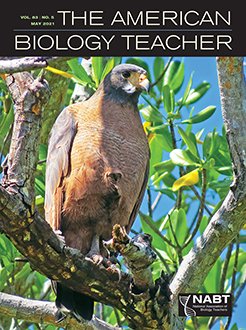To survive, complex organisms must maintain homeostasis by coordinating the activity of interacting, hierarchical systems. This is a core biological idea in the Next Generation Science Standards and one that many students find challenging. The most common lab exercise used to introduce homeostasis – a mini-experiment in which students measure how physical activity affects their pulse and respiratory rate – fails to show any direct evidence of internal stability. In this article, we describe how modifying this lab using an inexpensive pulse oximeter rectifies this shortcoming, giving students the ability to collect laboratory data that show both change and dynamic stability.
How to translate text using browser tools
3 June 2021
Using Pulse Oximetry to Illustrate Homeostasis in the Secondary Biology Laboratory
Cole Entress,
Christian Morehouse
ACCESS THE FULL ARTICLE
It is not available for individual sale.
This article is only available to subscribers.
It is not available for individual sale.
It is not available for individual sale.

The American Biology Teacher
Vol. 83 • No. 5
May 2021
Vol. 83 • No. 5
May 2021
homeostasis
laboratory exercises
science education




